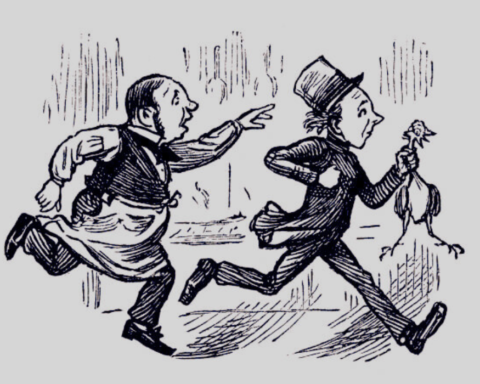In Puritan theology, a person wrote a covenant with the Devil by signing or stamping the Devil’s book with pen and ink or blood.
According to the beliefs of that time, only by signing did one person become a magician and gain demonic power, such as appearing in spectral form to harm another.
Testimony at Salem’s witchcraft visits was an essential part of the investigation to find a prosecutor who could prove the accused had signed the will or get the accused to admit that he had signed it.
For some victims, the testimony against them included allegations that they, like a ghost, were trying to force others or persuade others to sign the Devil’s book.
The idea of signing the Devil’s book mentioned may have originated from the Puritan belief that people made a covenant with God and identified it by signing the church list.
Thus, this accusation responds to the notion that the disease of witchcraft in the community of Salem will affect the local church. The issue raised by Samuel Pale and other provincial ministers was initially crazy.
Tituba and the Devil’s Book
When a woman suffering from slavery, Tituba was asked about her witchcraft in Salem; she stated that she had been beaten by a prisoner, the honor of Paris. She told her that she had to admit to practicing witchcraft.
He also “confessed” to signing the Devil’s Book and several other symbols believed to be symbols of witchcraft in European culture, including flying in the air on a pillar.
As Tituba confessed, there was no hanging, and only wizards could be killed. It was not tried by Oyer and Terminer, who saw the death penalty, but by the Supreme Court in May 1693 after a wave of convictions. The court acquitted the prosecution of the “devil’s covenant.”
In the case of Tituba, Judge John Hawthorne asked during the trial about the signing of the letter and other actions taken in European culture that represented witchcraft. She did not give any details until she was asked. Even then, she said he had signed “red as blood”, which allows her to say later that she deceived the Devil by signing with blood that looks but not her own.
Tituba was asked if she saw any “signs” in the book. She said she saw others, including Sarah Goode and Sarah Osborne. In some studies, she stated that she saw nine but did not know any.
Prosecutors began investigating Tituba, including details of witnesses signed by the Devil’s book, that the accused were usually spectators who tried to force the girls to sign. Book, even persecute them. The recurring theme of the respondents was the refusal to sign the letter and the refusal to touch the book.

Tales of Other Accusers
In March 1692, Abigail Williams, accused by the Salem Witch Court, accused Rebecca Nurse of forcing her (Abigail) to sign the Devil’s letter. Rev. Deodat Lawson, who was a minister in the city of Salem before Pastor Fr, was the witness.
When Mercy Lewis sued Giles Corey, he claimed that Corey appeared to him as a ghost and forced him to sign the Devil’s letter.
As a result, he was jailed four days after the indictment and executed in the press for refusing to admit or deny the charges against him.
Early History of Witchcraft
The idea that a person made a covenant with the Devil, either collectively or in writing, is a common belief in ancient history and sorcery.
Written by one or two German Dominican monks and professors in 1486–1487, Malleus Maleficarum and one of the most common sorcerer corner manuals described the treaty with the Devil as a ceremonial battle in the face of becoming a sorcerer, also called the Warlock’s head.
Politigory provides in-depth reviews of science, history, humanities, religion, social sciences and arts









